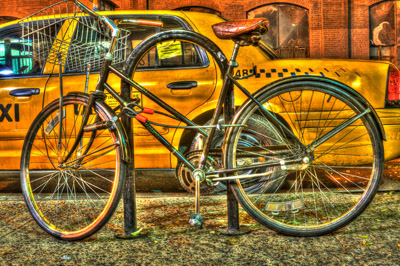With digital photography, there are so many ways one can alter his/her images in post-processing using Lightroom, Photoshop or any number of image editing programs or applications. I understand that everyone has a unique shooting and processing style, but many people simply overdo the latter part. When someone relies too heavily on the post-processing aspect, and doesn’t put enough thought or care into the image while they are shooting, it creates some pretty undesirable results. To me, a good image should be able to stand on its own, and not need to be over-processed in order to stand out or be considered “a keeper.” With my photos, I try to capture the perfect shot in-camera, and only slightly alter them in post-processing (e.g. add a little contrast, minor color correction or occasional conversion to black and white or sepia tone).
It is hard to define “over-processed,” but I will try. To me, it simply means 1 (or more) of the following:
a) the original has poor composition, is incorrectly exposed or just not a good picture. When someone takes a crappy photo and thinks that pumping up the colors, contrast and whatever else will “save the photo,” whatever that means. In doing this, he/she creates an over-processed mess. For a few examples, check out this shitty HDR on reddit (some shots are okay, but others are beyond awful). 🙁
b) the original is actually a great image, but the processing got out of hand. In this situation, the post-processing has sort of become a science experiment gone awry, like a photographic version of Frankenstein. 🙁
c) adding any number of special effects or filters for no reason whatsoever. We’ve all seen images where the photographer just felt they had to add that annoying vignette or fake lens flare. What is up with that? I can only guess that it’s because the photographer knew that the image was lacking, and that he/she needed to do something to “make it special.” 🙁
A few years ago, I was briefly interested in “funky” High Dynamic Range photography. I would shoot three (or more) bracketed exposures, then merge them in Photomatix Pro, experimenting with different filters, from grunge to photographic and many in between. After a month or so of creating HDR images, I said to myself, “why am I focusing on funky, vibrant effects to make my photos look good? My images should be quality as single, normal exposures with very little post-processing (occasional color-correction and a little added contrast).” Maybe I have a somewhat “purist” way of thinking about photography. HDR (with a “photographic” or “normal” filter, not the over-processed, grungy, vibrant filters) can be used effectively for certain types of photography – interior design photography, for example – where dynamic range enhances the image and more accurately represents a scene. It can look good used properly with landscapes as well, provided the processing is somewhat realistic and life-like, not resembling something from outer space.
In closing, art is subjective and the opinions in this post are my own. What do you think regarding over-processing images? Let me know your thoughts by leaving a comment below.
Check out this related post about post-processing over at Digital Photography School & this one about Why Being a Purist in Photography is Nonsense by Canvas of Light Photography.
Did you like this post? Feel free to share it and subscribe to our newsletter for helpful photography tips, resources and information delivered straight to your inbox. Simply enter your email in the opt-in above. Your email address is safe with us, and we will never share it.

